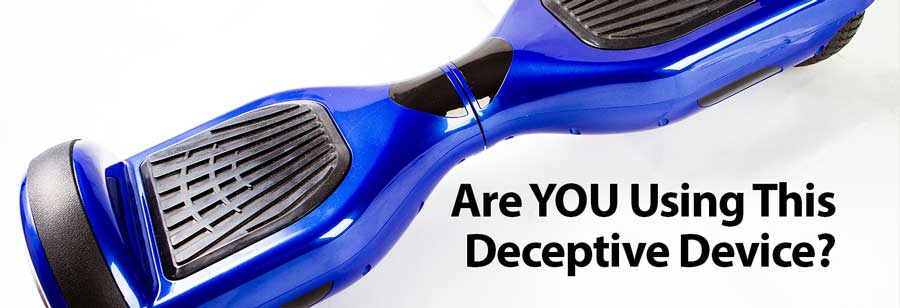I was at a convention about six months ago and noticed a few exhibitors coming in each morning standing on what appeared to me, for lack of a better description, a plastic board with two wheels. They would balance on it, rolling efficiently down the hall, sometimes even carrying a box simultaneously. I will be honest: it looked like a lot of fun.
Hoverboards seem to be everywhere, including church activities. But new technology can bring unexpected safety issues. Adventist Risk Management (ARM) has addressed safety for similar devices such as skateboards, roller skates, and push scooters. Hoverboards add a new feature to the fun: they are battery-operated
A HOVERBOARD CAN BURN DOWN A BUILDING?
Hoverboards use lithium batteries as their power source. These rechargeable, lightweight and powerful batteries are safe when manufactured and handled correctly. The issue is that many manufacturers are using knockoff batteries. Frequently, these are not made to proper specifications, causing them to combust unexpectedly and damage the device and subsequently the location where it is stored.According to the Claims Journal, the U.S. Consumer Product Safety Commission (CPSC) has counted 22 hoverboard fires in 17 states thus far (published January 6, 2016).
The U.S. Department of Transportation’s Pipeline and Hazardous Materials Safety Administration (PHMSA) issued a safety alert regarding hoverboards on December 24, 2015.
HOW CAN EXPLODING HOVERBOARDS BE AVOIDED?
Unfortunately, there are no guarantees. The safest method is to check for a UL certified charger and battery, which shows due diligence by the manufacturer.Hoverboards are being brought to and used at Seventh-day Adventist churches and school functions. It is important that your organization be prepared to address the how and when regarding hoverboard usage at your church and school. Additionally, safety guidelines for hoverboards must be outlined in a written policy.
ARM suggests three options to manage the risks associated with hoverboards:
- Prohibit the use of hoverboards on church and school property
- Only allow hoverboards your organization has purchased to be used on your property
- Allow the use of hoverboards, while managing the risk of:
- No charging batteries in or near buildings
- Proper supervision
- Posted usage policies on where hoverboards are permitted, who has permission to use them, and the required safety gear for operators.
- Do not ride near vehicular traffic.
- Use the same safety gear as you do when riding a skateboard, including:
- a skateboard helmet,
- knee and elbow pads, and
- wrist guards for protection from falls.
ARE THERE STATE SPECIFIC LAWS FOR THE USE OF HOVERBOARDS?
States are reviewing potential legislation to govern the use of hoverboards. A general rule of thumb is to follow state vehicle and traffic laws. For example, California has announced that hoverboards “can only be ridden on a highway with a speed limit of 35 miles per hour or less, or specific, designated bikeways. The rider must be at least 16 years old and must wear a bicycle helmet. Cities and counties are authorized to restrict the use of the electrically motorized boards.”Check state and local laws concerning the use of hoverboards to ensure your organization is compliant.
Adventist Risk Management, Inc. is not suggesting that hoverboards are prohibited. We just ask that your organization be proactive in managing this risk. Happy hovering!


